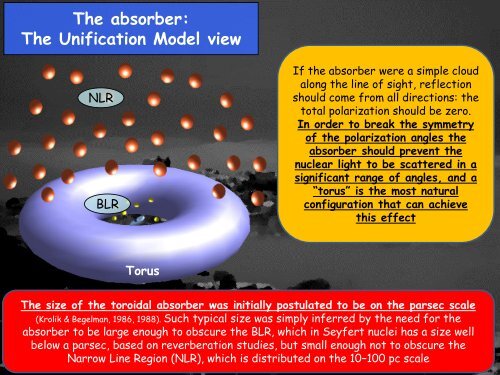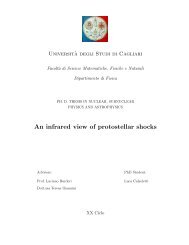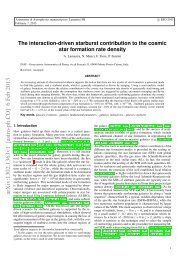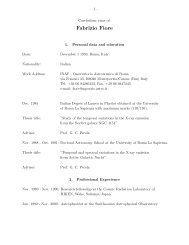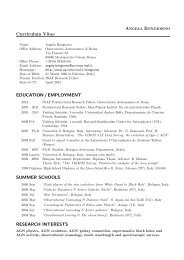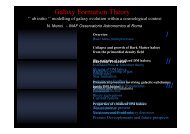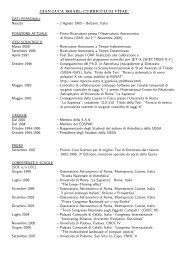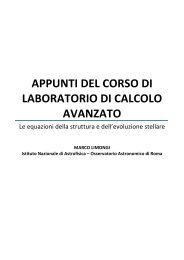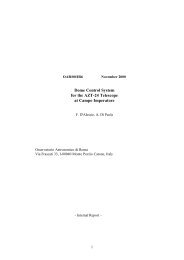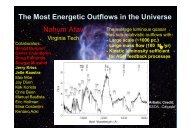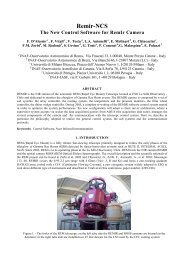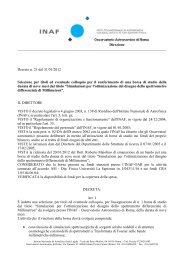The absorber - INAF-Osservatorio Astronomico di Roma
The absorber - INAF-Osservatorio Astronomico di Roma
The absorber - INAF-Osservatorio Astronomico di Roma
Create successful ePaper yourself
Turn your PDF publications into a flip-book with our unique Google optimized e-Paper software.
<strong>The</strong> <strong>absorber</strong>:<br />
<strong>The</strong> Unification Model view<br />
NLR<br />
BLR<br />
If the <strong>absorber</strong> were a simple cloud<br />
along the line of sight, reflection<br />
should come from all <strong>di</strong>rections: the<br />
total polarization should be zero.<br />
In order to break the symmetry<br />
of the polarization angles the<br />
<strong>absorber</strong> should prevent the<br />
nuclear light to be scattered in a<br />
significant range of angles, and a<br />
“torus” is the most natural<br />
configuration that can achieve<br />
this effect<br />
BLR<br />
Torus<br />
<strong>The</strong> size of the toroidal <strong>absorber</strong> was initially postulated to be on the parsec scale<br />
(Krolik & Begelman, 1986, 1988). Such typical size was simply inferred by the need for the<br />
<strong>absorber</strong> to be large enough to obscure the BLR, which in Seyfert nuclei has a size well<br />
below a parsec, based on reverberation stu<strong>di</strong>es, but small enough not to obscure the<br />
Narrow Line Region (NLR), which is <strong>di</strong>stributed on the 10–100 pc scale


